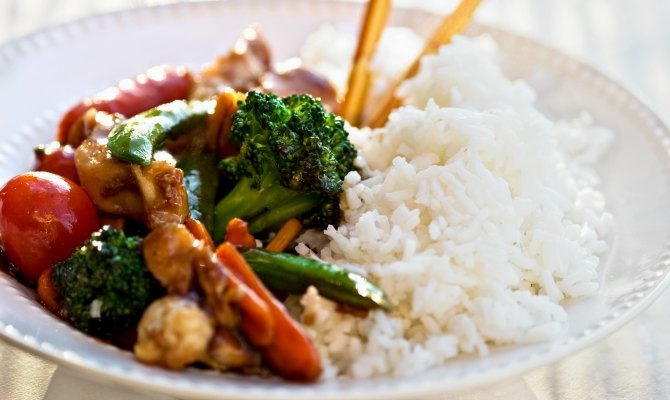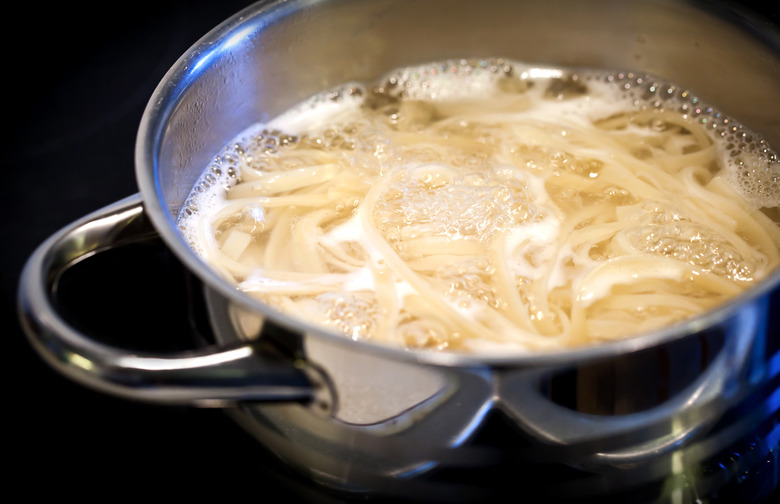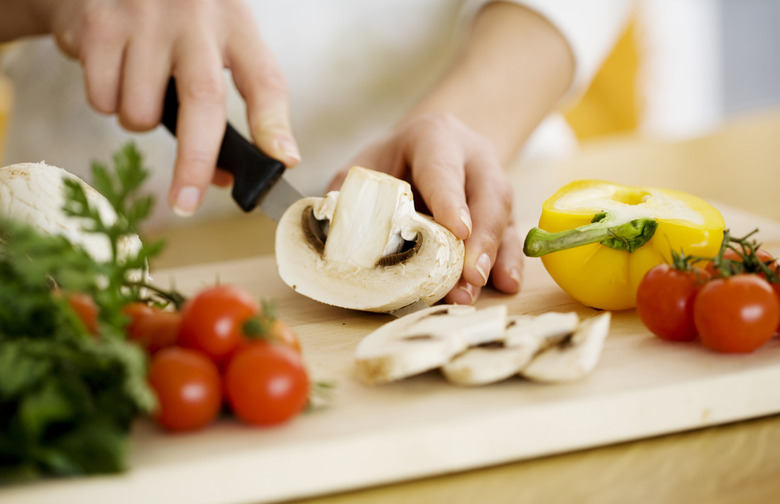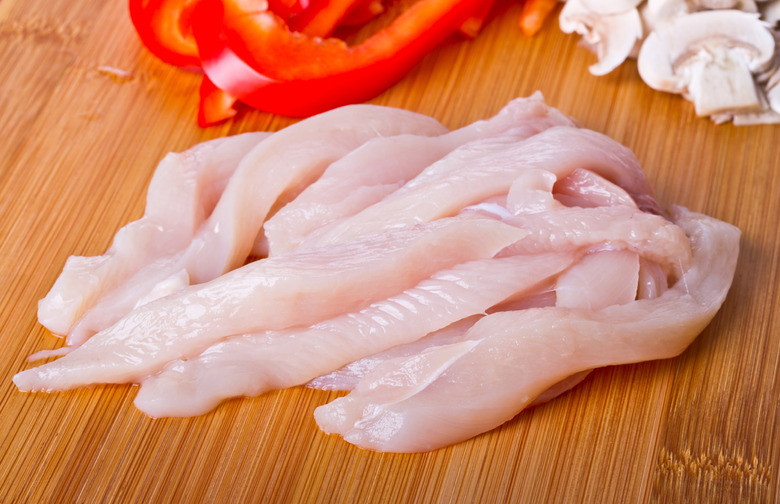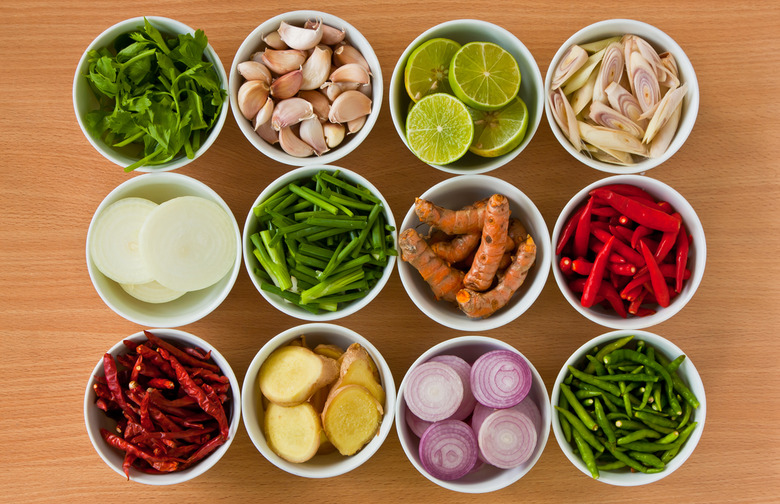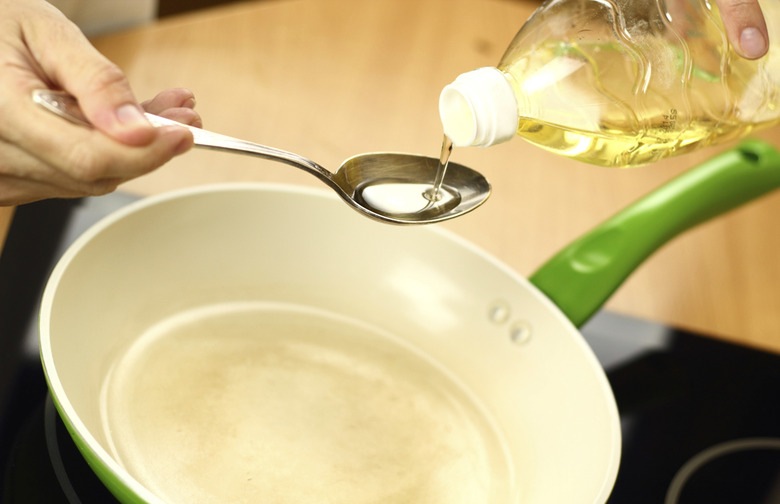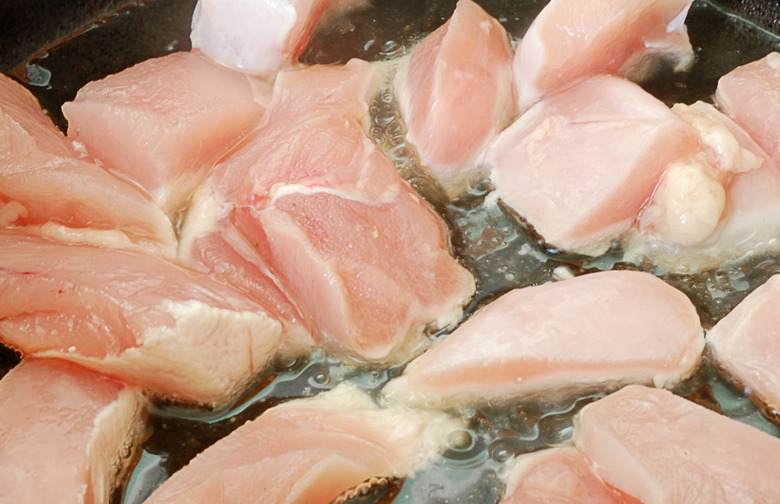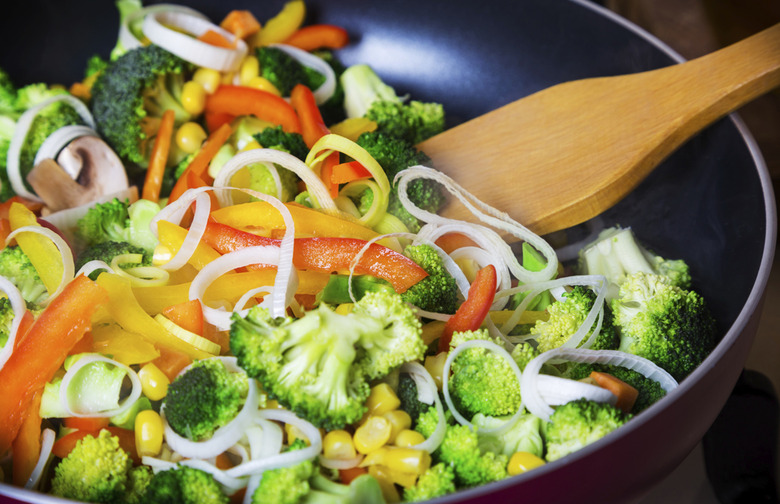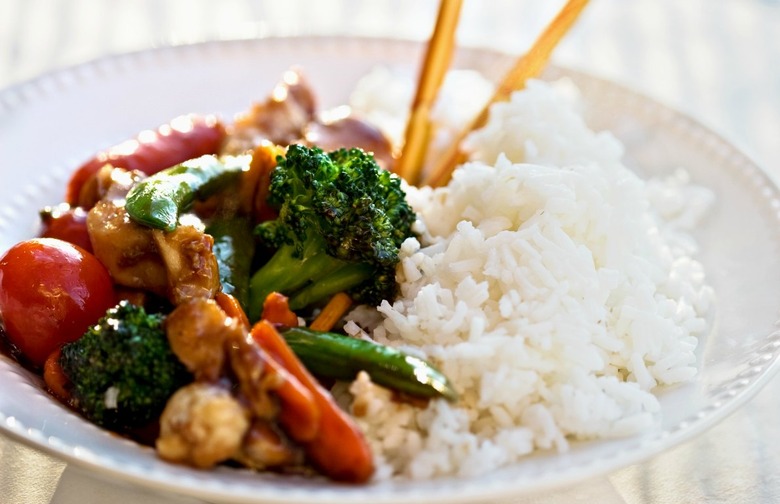How To Make A Stir-Fry Without A Wok
If you're looking for a quick and easy dinner, try making a stir-fry — even if you don't have a wok.
Start Cooking Rice or Noodles
Stir-fry is a quick-cooking method, so if you're planning to serve your meal over rice or noodles you'll need to start cooking your starch right away. Put your rice or noodles on to cook before you start chopping your other ingredients and everything should be finished around the same time.
Chop the Vegetables
The key to stir-frying is to have all of your ingredients ready before you start cooking. Gather the vegetables that you're planning to use and cut them into more or less equally sized pieces so that they'll cook evenly. Keep each type of vegetable separate because, when it's time to cook, delicate ingredients like tomatoes will go in the pan at the end of the cooking process while hardier ingredients like carrots or peppers will be added at the beginning.
Slice the Meat
You should also have your protein ready to go before you start cooking. Be sure to cut chicken, pork, or beef into thin strips across the grain; doing so helps tenderize the meat and allows it to cook quickly over high heat.
Gather Seasonings
If you're adding ingredients like minced ginger, garlic, scallions, or red pepper flakes, have them measured out and ready to go into the pan before you start cooking. This is also a good time to season your meat; you can simply flavor it with salt and pepper or cover it in a marinade. With stir-frying there is no need for an extended soak; simply cover it in the marinade a few minutes prior to cooking to add extra flavor.
Heat the Oil
Once your ingredients are prepped, timing is everything. You want your pan to be hot, so start by placing it over medium-high to high heat. Test the temperature of the pan before you start cooking by carefully flicking a few droplets of water into it; if they evaporate almost immediately, the pan is ready. Take the pan off the heat and add about a tablespoon of vegetable oil, swirling the oil to coat the pan. If the pan immediately starts smoking, it's too hot, and you should wash it out and start again. Once your oil is heated, add the aromatics (ginger, red pepper flakes, etc.) and let them cook for a few seconds to flavor your cooking oil.
Cook the Meat
Once your pan and oil are ready, spread your meat evenly across the bottom of the pan. It should sizzle when it's added. Let the protein sear for one full minute, then stir it and let it cook for approximately one more full minute.
Cook the Vegetables
When the meat is fully cooked, add the hardy vegetables like onions, carrots, peppers, or sugar snap peas. If you're using nuts, they should go in at this point, as well. Sprinkle them with a pinch of salt and stir-fry for 1 to 2 minutes, until slightly softened but still brightly colored and somewhat crisp. Feel free to add another tablespoon or two of oil at this point, if needed. If you like your vegetables softer, remove the meat at this point and add it back in at the end of the cooking process (that way it won't overcook as you soften your vegetables). Then, when the vegetables have reached your desired doneness, add a small amount of broth, stock, or water to the pan, throw in any delicate ingredients like tomatoes or scallions, and cook just long enough to allow the ingredients to heat through.
Final Stir
Give the ingredients in your pan a final stir and serve it over rice or noodles.
